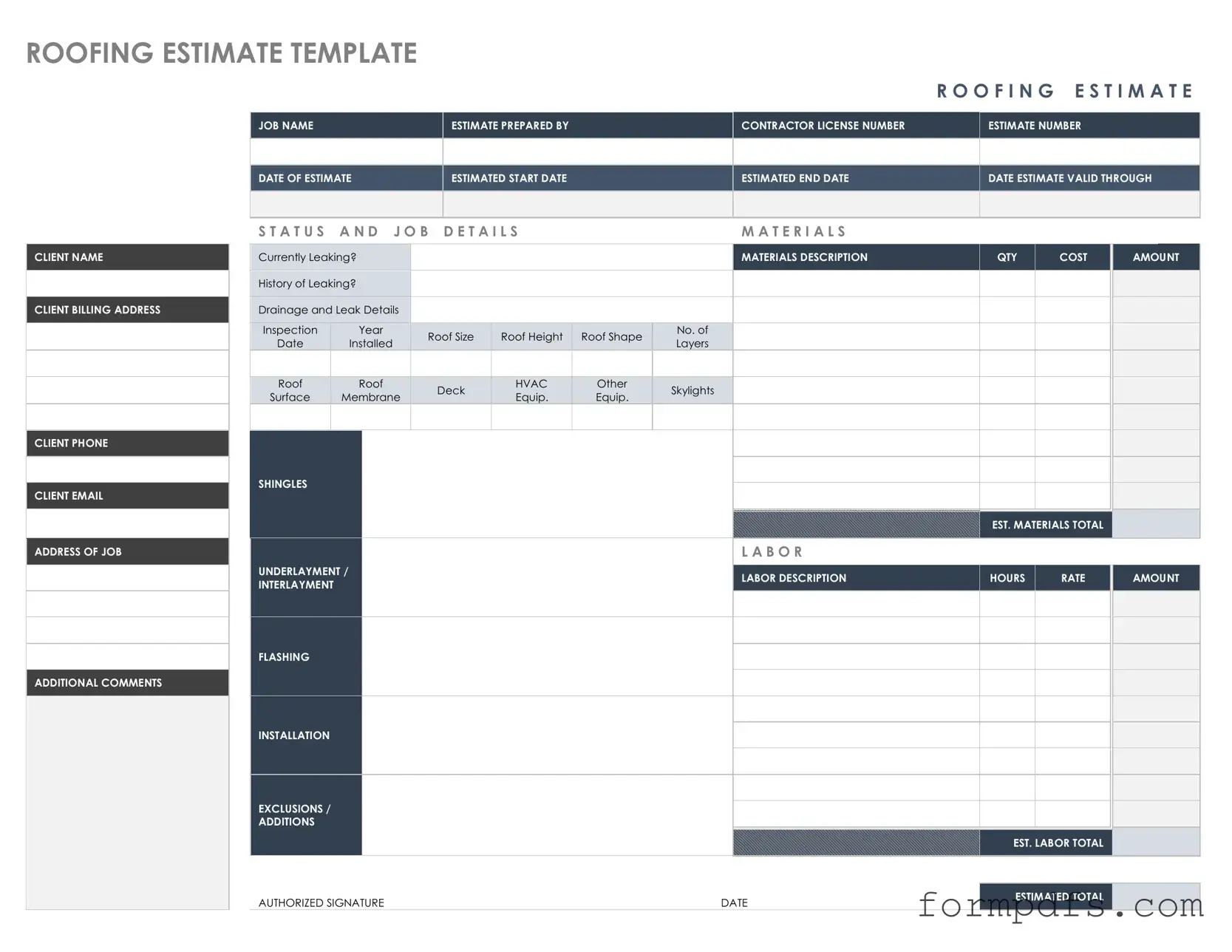When embarking on a roofing project, understanding the nuances of a Roofing Estimate form is crucial for homeowners and contractors alike. This form serves as a comprehensive blueprint that outlines the scope of work, materials needed, and associated costs. It typically includes sections for the contractor’s information, project details, and a breakdown of labor and material expenses. Homeowners can expect to see estimates for various roofing materials, such as shingles, tiles, or metal, along with the costs for installation and any necessary permits. Furthermore, the form often addresses timelines for project completion and warranties on both materials and workmanship. By reviewing this estimate, homeowners gain insight into the financial and logistical aspects of their roofing project, enabling informed decisions that align with their budget and expectations. Ultimately, the Roofing Estimate form acts as a foundational document that facilitates clear communication between all parties involved, ensuring that everyone is on the same page from the outset.
